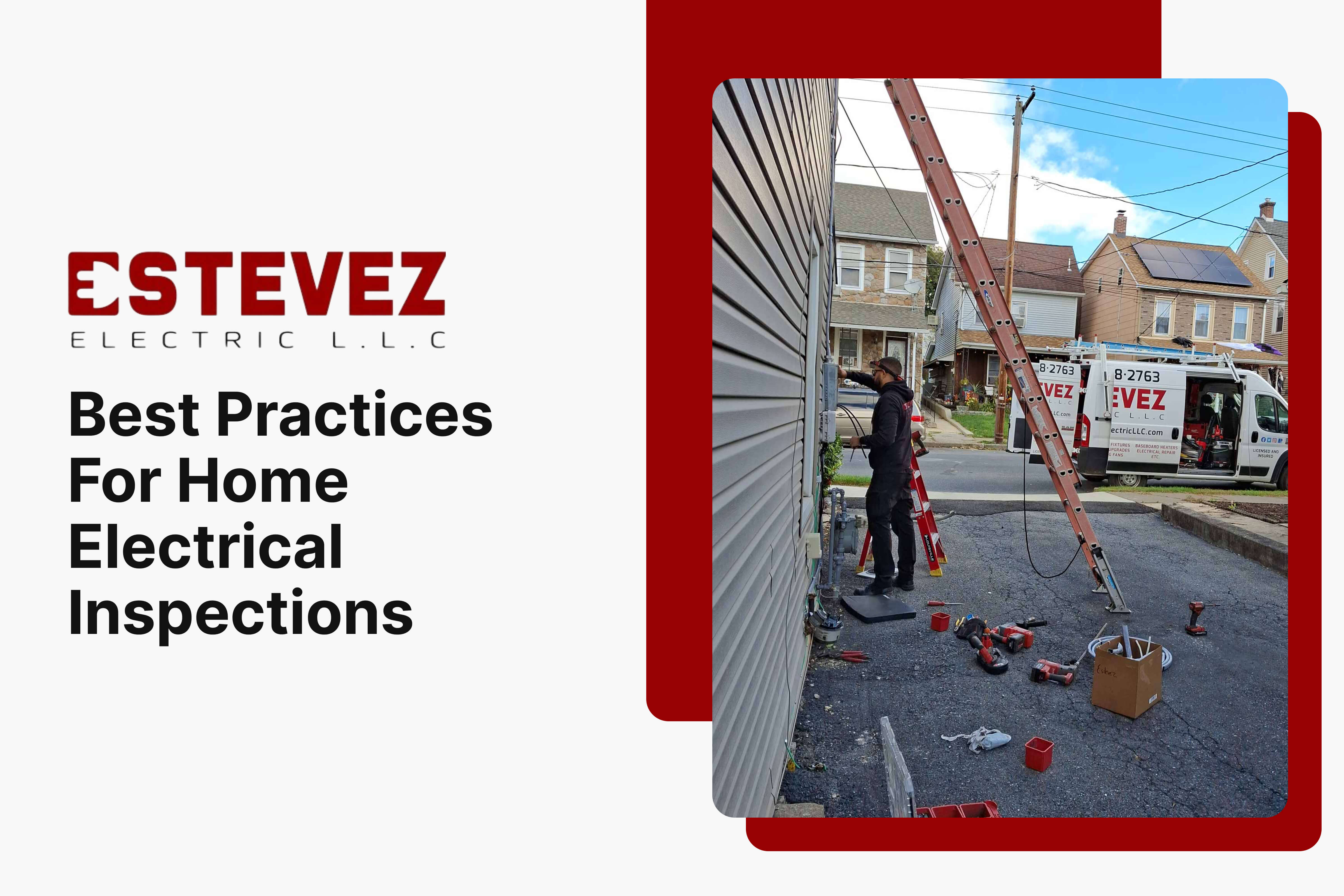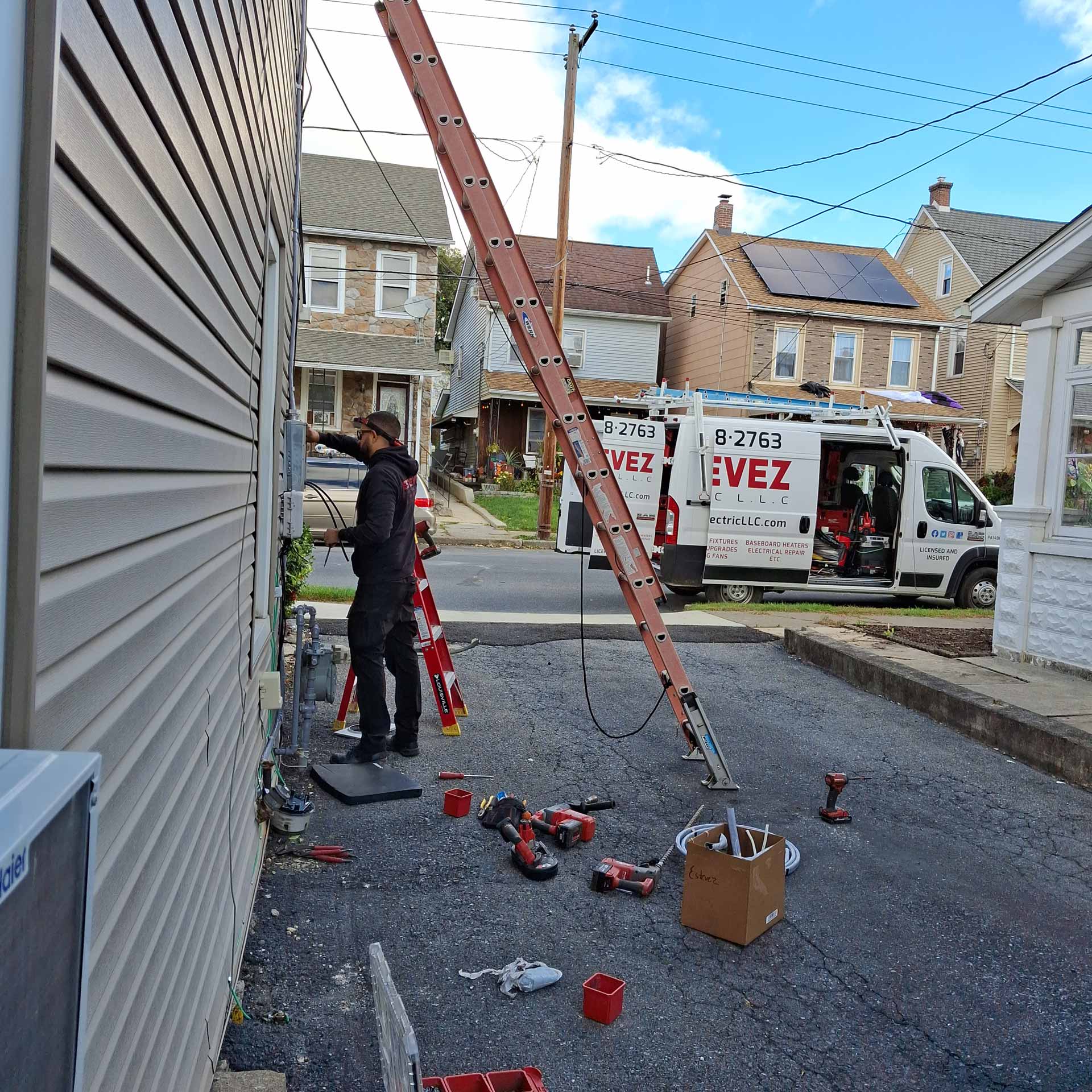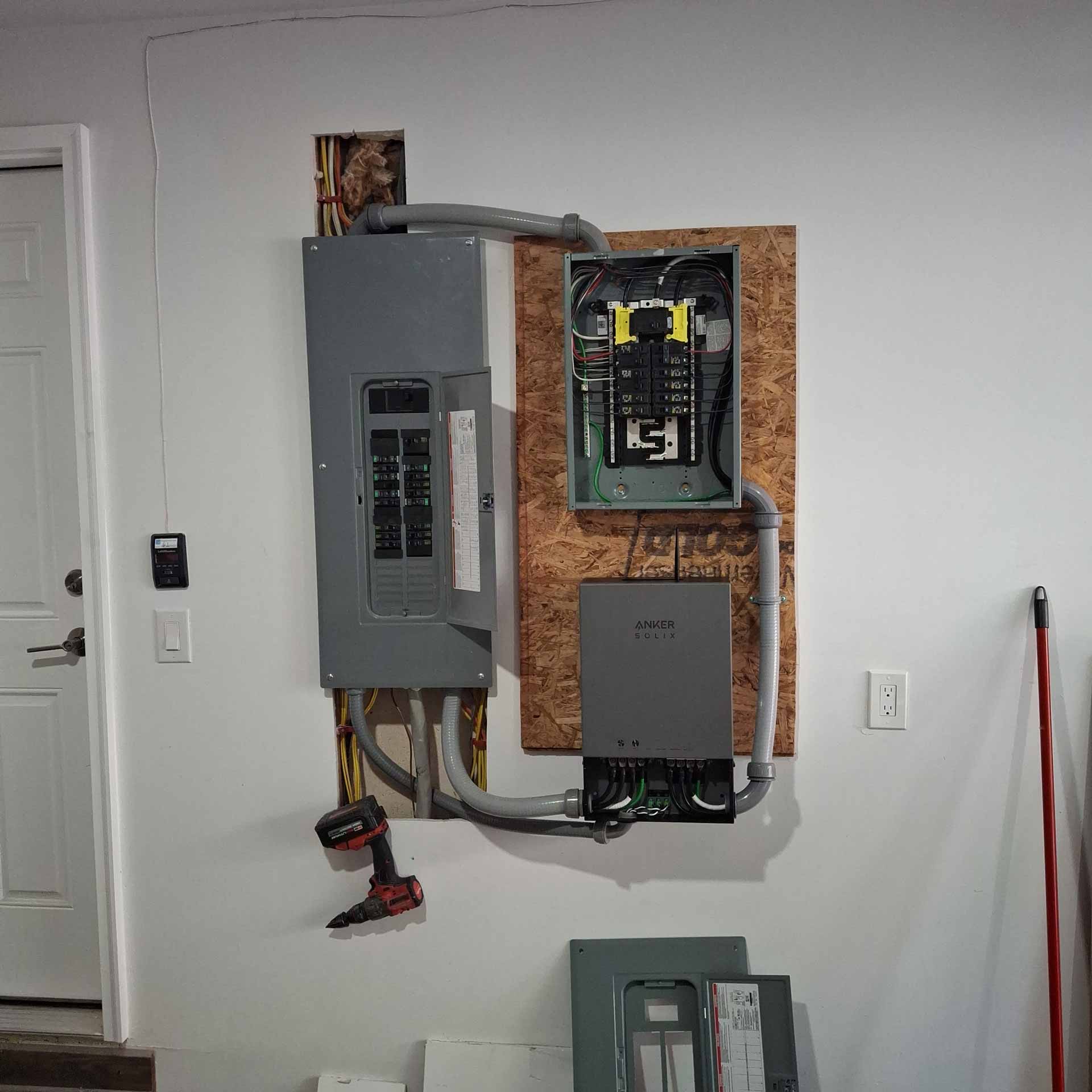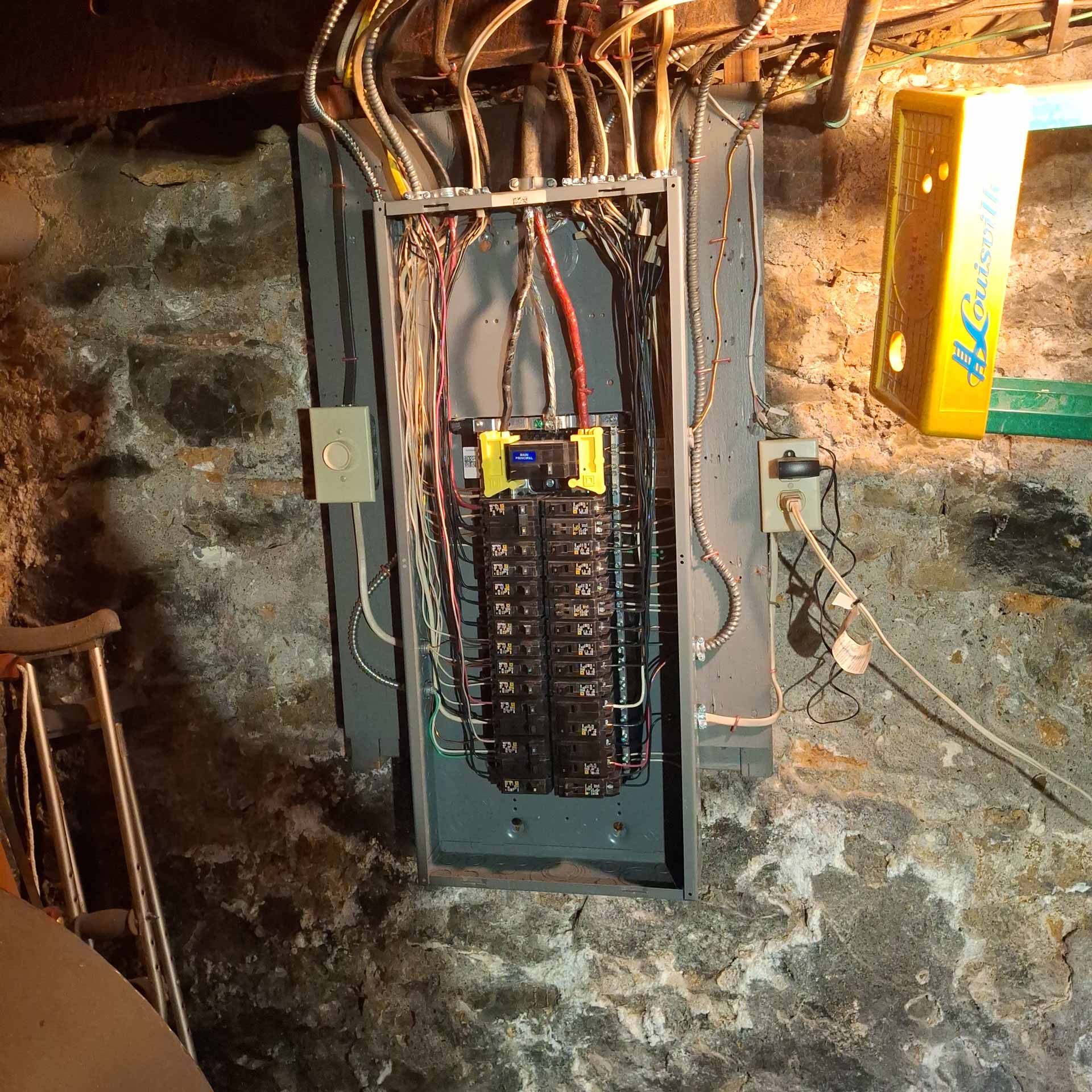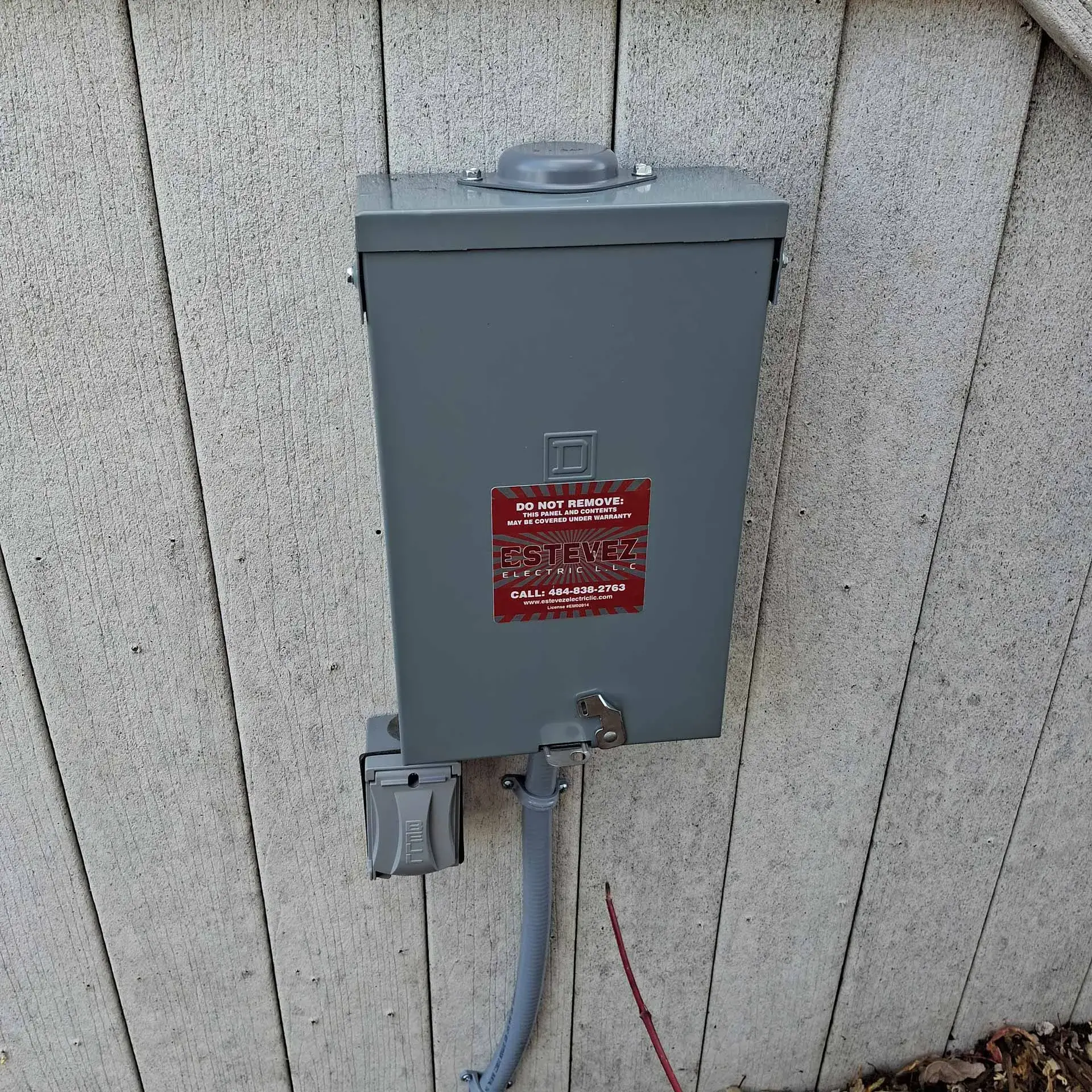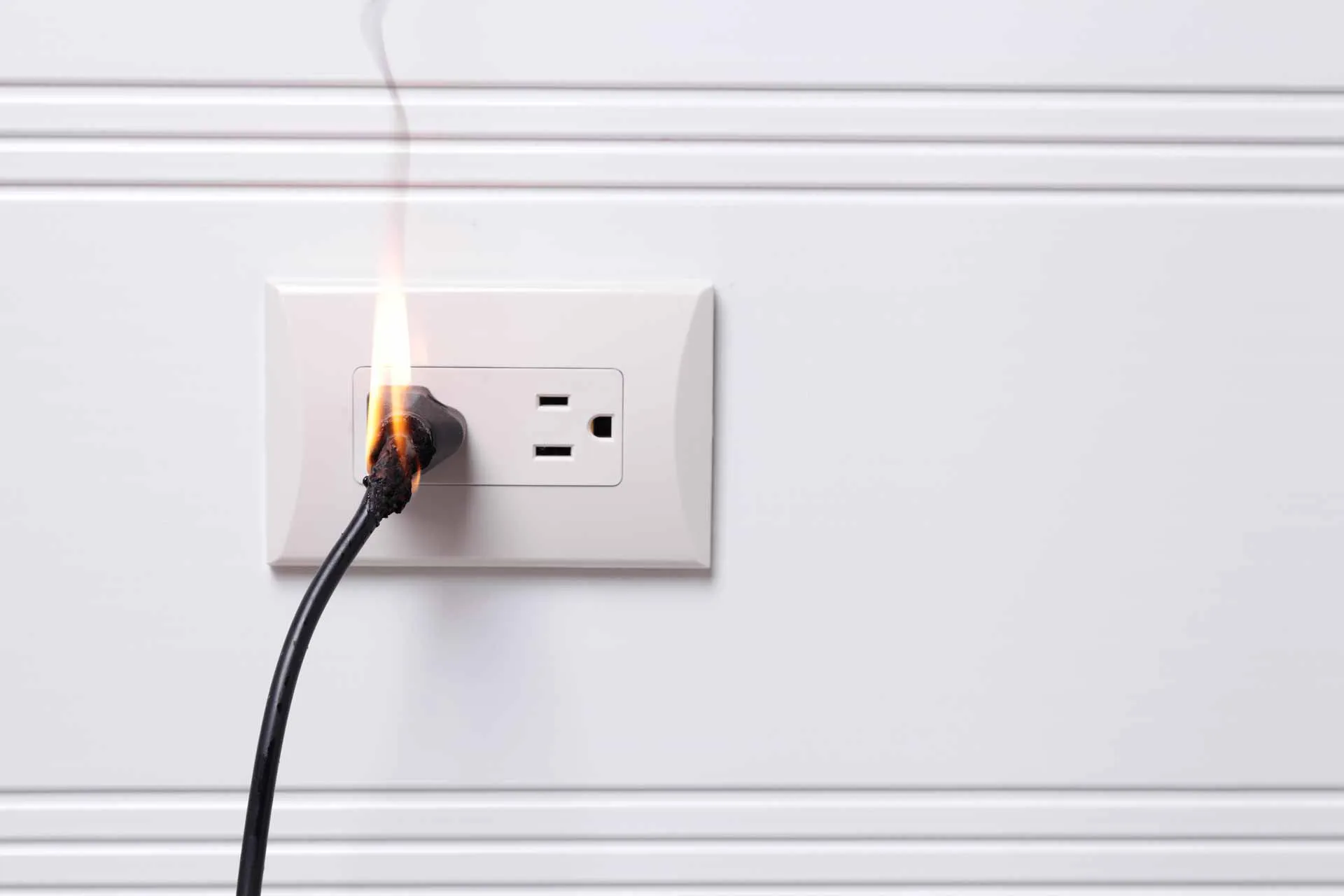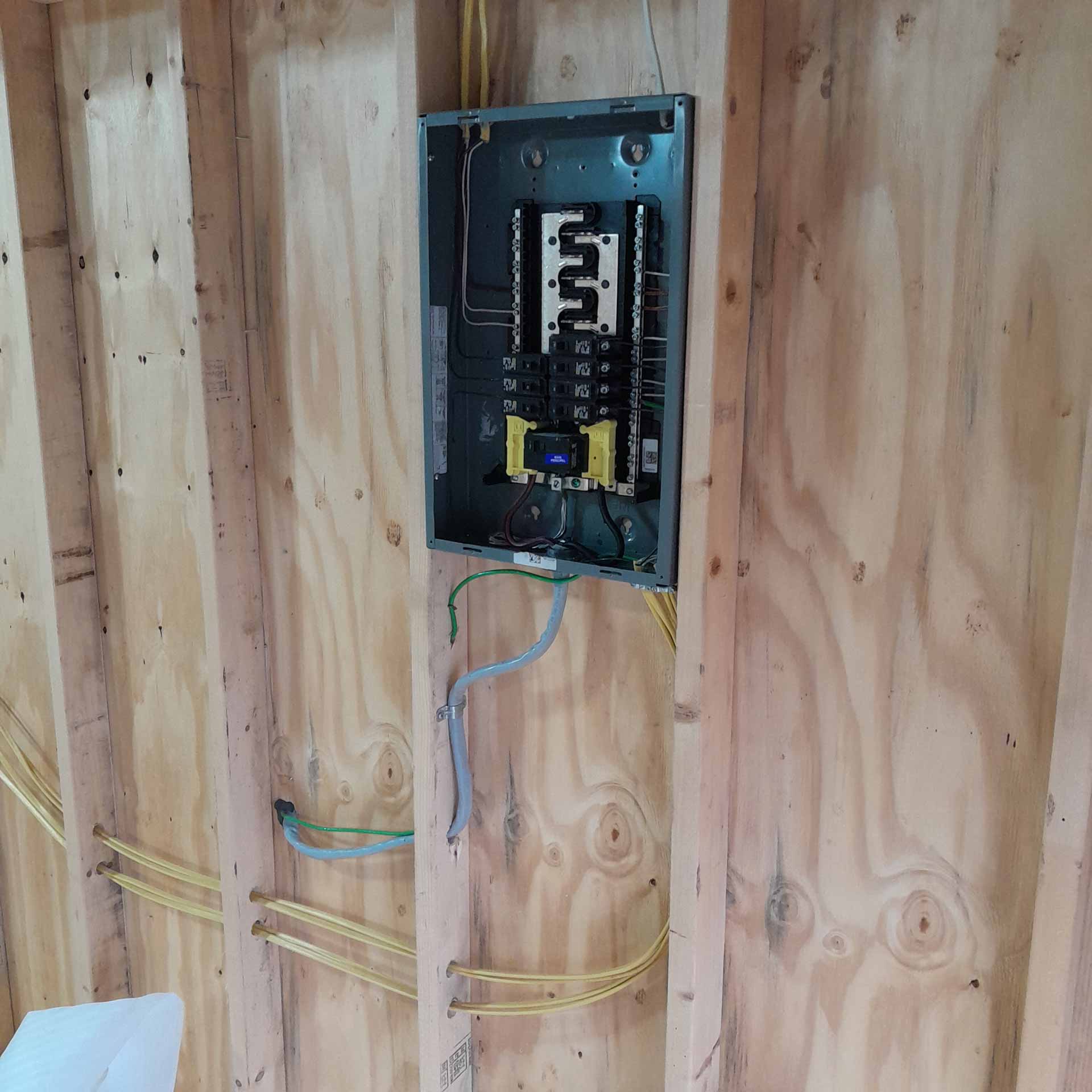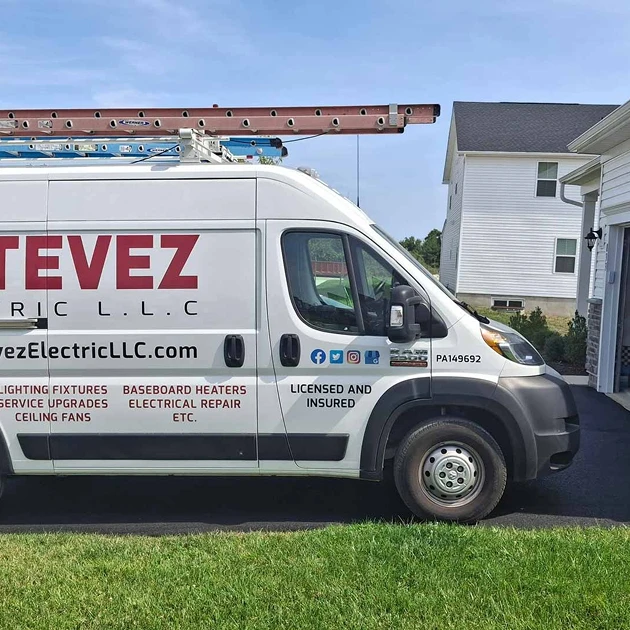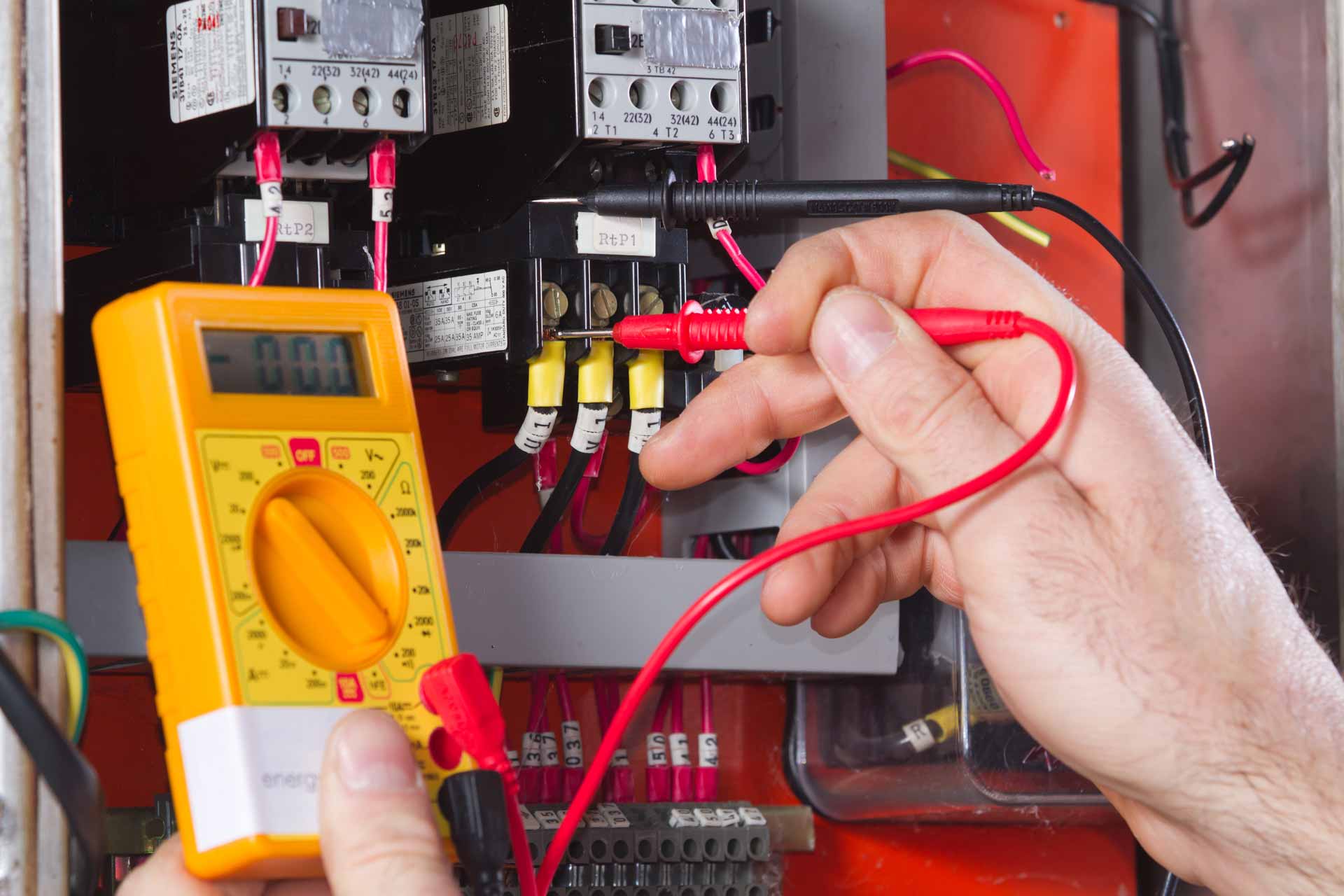Key Takeaways
- Regular electrical inspections are recommended every 3-5 years for newer homes and annually for older properties
- Professional inspection of your electrical panel, outlets, and wiring can prevent hazardous conditions
- GFCI and AFCI protection verification is essential for home safety
- Warning signs like flickering lights or warm outlets indicate immediate inspection needs
- Proper maintenance of your electrical system can prevent emergencies and costly repairs
- Outdated wiring in older homes presents significant safety risks requiring specialized attention
- DIY visual inspections between professional assessments help maintain ongoing electrical safety
- Electrical upgrades may be necessary to meet modern power demands and safety standards
Why Regular Electrical Inspections Are Essential
Your home’s electrical system is the lifeline of your daily activities, powering everything from essential appliances to entertainment devices. At Estevez Electric LLC, we understand that regular electrical inspections are not just a maintenance task but a crucial safety measure for every homeowner. These inspections serve as preventative healthcare for your home’s electrical infrastructure, ensuring everything functions safely and efficiently throughout the year.
Regular electrical inspections help identify potential hazards before they become dangerous problems. Faulty wiring, overloaded circuits, and outdated electrical components can lead to electrical fires, which account for a significant percentage of residential fires in the United States. According to the National Fire Protection Association, electrical failures or malfunctions are responsible for an estimated 51,000 home fires annually, resulting in hundreds of deaths and over $1.3 billion in property damage. By scheduling routine inspections, you’re taking a proactive approach to your family’s safety and potentially saving lives.
Beyond safety, regular inspections can save you money in the long run. Identifying and addressing minor issues early prevents them from developing into major problems that require expensive repairs. For instance, catching a loose connection before it causes arcing could save you from a costly electrical fire. An efficiently functioning electrical system consumes less energy, potentially reducing your utility bills by 5-10% annually. Professional inspections can also identify outdated components that, when replaced, can significantly improve your home’s energy efficiency and performance.
Our comprehensive maintenance guide emphasizes that electrical inspections should be part of your home maintenance routine, just like HVAC service or plumbing checks. Most experts, including our team at Estevez Electric, recommend scheduling an electrical inspection every 3-5 years for newer homes and annually for homes that are over 25 years old. This frequency ensures that potential issues are caught early while balancing the cost and convenience factors for homeowners. Remember that these are minimum recommendations – homes with specific risk factors may require more frequent professional assessments.
Recommended Inspection Frequency for Different Home Types
The age and condition of your home play significant roles in determining how often you should schedule electrical inspections. For newer homes built within the last 10-15 years, a professional inspection every 3-5 years is typically sufficient, assuming there are no visible issues or concerns. These newer homes generally have electrical systems designed to meet modern standards and power demands, with safety features like AFCI protection already integrated into their design.
However, if you own an older home, particularly one built before the 1980s, more frequent inspections are advisable. These homes often have outdated wiring systems that may not be equipped to handle modern electrical demands. The insulation on older wiring can deteriorate over time, creating potential fire hazards. Annual inspections can help ensure that your electrical system remains safe and functional. For homes built before 1960 that might still have original wiring, some electricians even recommend semi-annual inspections to carefully monitor these aging systems for any signs of deterioration.
There are also specific life events that should trigger an electrical inspection:
- When purchasing a new home
- Before or after a major renovation
- After a significant electrical event (like a lightning strike or power surge)
- When adding major appliances or systems that increase electrical demand
- If you notice any warning signs of electrical problems
- After any DIY electrical work or repairs by previous homeowners
- When preparing to sell your home to ensure it meets current standards
Understanding your electrical panel is crucial for maintaining a safe home. If your home still has an outdated electrical panel, an inspection might reveal the need for an upgrade, which typically costs between $1,500 and $4,000 but significantly improves both safety and efficiency. Modern panels not only reduce fire risks but can also accommodate additional circuits for new appliances and technologies, making them a worthwhile investment for aging electrical systems. The increased capacity also helps prevent the frequent circuit tripping that often plagues homes with outdated panels.
Key Components of a Professional Electrical Inspection
A thorough electrical inspection covers several critical components of your home’s electrical system. When our professionals at Estevez Electric conduct an inspection, we pay particular attention to the following areas, using specialized equipment and techniques to identify issues that might not be visible to the untrained eye. Our comprehensive approach ensures no potential hazards go undetected.
Electrical Panel Examination
The electrical panel, also known as the breaker box, is the heart of your home’s electrical system. During an inspection, we check for:
Proper breaker sizing and function, signs of overheating or corrosion, secure wire connections, adequate capacity for your home’s needs, presence of outdated or recalled panel types, proper labeling of circuits, evidence of moisture intrusion or pest damage, and appropriate clearance around the panel for safe access.
Outlet and Switch Testing
All outlets and switches throughout your home should be tested for:
Proper wiring configuration, secure connections, correct grounding, physical damage or wear, proper function under load, correct polarity to ensure safe operation, appropriate placement according to current electrical codes, and presence of tamper-resistant features in homes with children.
Understanding how circuit overloads occur can help you prevent dangerous situations in your home. Overloaded circuits are often identified during outlet testing and are a common issue in older homes with fewer circuits. When too many devices draw power from a single circuit, it can cause overheating and potentially lead to electrical fires. Our inspectors use specialized tools to measure the actual load on each circuit and identify potential overload situations before they become hazardous.
GFCI and AFCI Protection Verification
Ground Fault Circuit Interrupters (GFCIs) and Arc Fault Circuit Interrupters (AFCIs) are crucial safety devices that help prevent electrical shocks and fires. Our inspections verify that:
- GFCIs are installed in required locations (kitchens, bathrooms, garages, outdoors)
- AFCIs are present where required by current code
- All safety devices function properly when tested
- Protection coverage meets current safety standards
- Devices respond within the correct timeframe when tested
- Any older devices are still functioning as designed
- Reset functions work properly after tripping
Wiring Inspection
The inspection of your home’s wiring focuses on:
Identifying any damaged or deteriorating wiring, checking for outdated wiring types (like aluminum or knob-and-tube), ensuring proper wire gauge for the circuits, verifying appropriate insulation and protection, looking for any signs of DIY work that doesn’t meet code requirements, examining junction boxes for proper connections and covers, identifying any exposed wiring in accessible areas, and checking for proper wire routing and protection from physical damage.
Optimizing your home’s wiring is not just about safety but also about efficiency and future-proofing your electrical system. Our professional inspections can identify opportunities for improvement in your home’s wiring configuration. This might include adding dedicated circuits for high-demand appliances, upgrading wiring to support modern electronics, or reorganizing circuit distribution to balance electrical loads more effectively throughout your home.
Warning Signs That Indicate Immediate Inspection Needs
While regular scheduled inspections are important, certain warning signs should prompt an immediate call to a professional electrician. Being aware of these indicators can help prevent dangerous situations from escalating into emergencies or catastrophic events. Don’t ignore these warning signs, as they often indicate serious underlying electrical issues that require prompt professional attention.
Frequent Circuit Breaker Trips
If your circuit breakers trip frequently, it’s often a sign that the circuit is overloaded or there’s a fault in the system. This is not just an inconvenience but a warning that your electrical system is under stress. Circuit breakers are designed to shut off power when they detect dangerous conditions, so repeated tripping indicates a persistent problem that needs addressing. In some cases, this might be solved by redistributing appliances across different circuits, but it could also indicate more serious issues like short circuits or ground faults that require professional repair.
Flickering or Dimming Lights
When lights flicker or dim, especially when major appliances turn on, it could indicate an overloaded circuit or a poor connection somewhere in your electrical system. This is particularly concerning in older homes with outdated wiring. Consistent flickering might indicate loose connections at the fixture, within the circuit, or even at the electrical panel. These loose connections can generate heat and potentially cause fires. If the flickering occurs throughout multiple rooms or your entire home, it could also indicate problems with your utility’s power supply, which should be reported to both your electrician and your power company.
Warm or Discolored Outlets and Switches
Outlets or switches that are warm to the touch or show discoloration (often yellowing or browning) indicate overheating, which is a serious fire hazard. This requires immediate professional attention. The discoloration is caused by heat from electrical arcing or excessive current flow, which can eventually lead to carbonization of the plastic and potential ignition of surrounding materials. Never continue to use an outlet that shows these warning signs, as the internal damage is likely much more extensive than the visible external signs suggest.
Our guide on handling electrical emergencies provides essential information for homeowners facing potential electrical hazards. However, prevention through regular inspection is always the safest approach. The guide covers important steps to take when confronted with electrical emergencies, including how to safely shut off power to affected areas and when evacuation might be necessary to protect your family from serious electrical hazards.
Burning Smell or Sparks
Any burning smell or visible sparks from outlets, switches, or appliances is an urgent warning sign that requires immediate action. Turn off power to the affected area if possible and call a professional electrician right away. These symptoms often indicate that insulation is burning or that arcing is occurring within your electrical system. Both conditions can rapidly escalate to fires within walls where they might not be detected until significant damage has occurred. The distinctive smell of electrical burning is often described as sharp and acrid – quite different from other household odors – and should never be ignored.
Buzzing or Sizzling Sounds
Electrical systems should operate silently. Any buzzing, sizzling, or crackling sounds coming from outlets, switches, or your electrical panel could indicate dangerous arcing or loose connections. These sounds occur when electricity is jumping across gaps in the connection or when insulation is breaking down, creating a path for current to flow where it shouldn’t. Left unaddressed, these issues often lead to electrical fires. The sounds may be intermittent or constant, but either way, they indicate an electrical problem that requires professional assessment and repair as soon as possible.
DIY Inspection Checklist Between Professional Visits
While professional inspections are essential, homeowners can and should perform basic visual inspections between professional visits. These regular checks can help identify developing problems before they become serious hazards. Creating a routine for these inspections ensures they become a regular part of your home maintenance schedule. Here’s a simple checklist you can follow to maintain vigilance over your electrical system’s condition:
Monthly Visual Checks
- Inspect outlets and switches for discoloration, cracks, or other damage
- Check that outlet and switch cover plates are secure and undamaged
- Look for any exposed wiring or damaged cords on appliances and lamps
- Test GFCI outlets by pressing the “test” and “reset” buttons
- Ensure smoke and carbon monoxide detectors are working properly
- Verify that electrical cords aren’t pinched, crushed, or running under carpets
- Check that extension cords are being used temporarily, not as permanent wiring
- Inspect bathroom and kitchen outlets for signs of water exposure
Quarterly Checks
Examine your electrical panel for any signs of rust, moisture, or overheating. Verify that circuit breakers move freely and are properly labeled. Check for any buzzing or unusual sounds coming from the electrical panel. Inspect outdoor outlets and fixtures for weather damage or deterioration. Look for any tree branches that may be growing too close to power lines. Test all AFCI breakers using the test button (if your panel has them). Ensure all electrical panel components are secure and free from corrosion. Check that surge protectors are functioning properly and not overloaded.
Our 12 essential maintenance tips provide more detailed guidance on how homeowners can help maintain their electrical systems between professional inspections. This comprehensive resource covers everything from proper circuit management to seasonal considerations for electrical maintenance. Following these guidelines can help extend the life of your electrical components and maintain optimal safety standards throughout your home.
The Inspection Process: What to Expect
When you schedule a professional electrical inspection with Estevez Electric LLC, here’s what you can expect during the process. Understanding the inspection procedure helps you prepare your home and make the most of this important safety service. Our professional inspections are thorough, methodical, and designed to identify both current issues and potential future concerns.
Initial Assessment
Our licensed electrician will begin with a discussion about your home, its age, any concerns you have, and any electrical issues you’ve noticed. This helps us focus on potential problem areas during the inspection. We’ll ask about recent renovations, additions of major appliances, and any unusual electrical behavior you’ve observed. This conversation provides valuable context that guides our inspection process and helps us understand your specific needs and concerns. We may also review any documentation you have about previous electrical work or inspections.
Comprehensive System Evaluation
The inspection will cover all aspects of your electrical system, including detailed examination of the electrical panel, testing of outlets, switches, and fixtures throughout the home, verification of GFCI and AFCI protection, inspection of visible wiring, evaluation of grounding and bonding systems, assessment of smoke detector placement and function, checking for proper circuit protection and distribution, examination of outdoor electrical components, verification of proper wire gauges and types for each application, and testing of specialized circuits for major appliances.
Documentation and Recommendations
After the inspection, you’ll receive a detailed report of findings, prioritized recommendations for any necessary repairs or upgrades, documentation of any code violations or safety concerns, suggestions for improvements to enhance efficiency and safety, cost estimates for recommended work, timeline recommendations for addressing various issues, explanation of potential risks associated with any identified problems, and documentation for insurance or real estate purposes if needed.
Understanding the benefits of upgraded electrical service, such as 200-amp service, can help you make informed decisions about potential improvements to your home’s electrical system. Modern homes with multiple high-demand appliances, electric vehicle charging stations, or extensive electronics often benefit from increased electrical capacity. Our inspection report will indicate whether your current service is adequate for your needs or if an upgrade would provide safety and functionality benefits.
Special Considerations for Older Homes
Older homes present unique challenges when it comes to electrical inspections and safety. If your home was built before 1980, there are several specific issues our inspectors will look for. These vintage properties often have charm and character, but their electrical systems typically weren’t designed to handle modern power demands and may incorporate materials or methods no longer considered safe by today’s standards.
Outdated Wiring Types
Homes built before the 1970s may have aluminum wiring or even knob-and-tube wiring, both of which present significant safety concerns by today’s standards. These older wiring types may need to be replaced to ensure safety. Aluminum wiring can loosen over time due to thermal expansion and contraction, creating connection points that can overheat. Knob-and-tube wiring typically lacks grounding protection and has deteriorating insulation that can lead to shorts and fires. Our inspectors are specially trained to identify these wiring types and assess their condition and associated risks.
Insufficient Electrical Capacity
Many older homes were built when electrical demands were much lower than they are today. Original electrical systems might have been designed for just 60 amps, while modern homes typically require 200 amps or more to safely power all devices and appliances. This limited capacity can lead to frequent overloads, especially when multiple modern appliances operate simultaneously. Our inspection will assess whether your home’s electrical service is adequate for your current usage patterns and recommend appropriate upgrades if necessary. Upgrading from 60 or 100 amps to 200 amps can significantly improve both safety and convenience.
Lack of Grounding
Homes built before the 1960s often have two-prong outlets rather than the three-prong grounded outlets that are standard today. Proper grounding is essential for electrical safety and protecting sensitive electronics. Without proper grounding, there’s an increased risk of electrical shock and damage to devices during power fluctuations. Our inspectors can identify ungrounded circuits and recommend appropriate solutions, which might include rewiring or installing GFCI protection as an alternative safety measure where rewiring isn’t feasible. Proper grounding also helps ensure that surge protectors can function effectively to protect your valuable electronics.
Our guide to electrical panel upgrades explains how upgrading your electrical service can address many of these older home issues while improving safety and efficiency. Panel upgrades are often the cornerstone of electrical modernization in vintage homes, providing the foundation for other necessary improvements throughout the electrical system. The guide walks you through the process, benefits, and considerations for this important upgrade.
Outdated Electrical Panels
Certain types of electrical panels installed in older homes have been identified as fire hazards. These include Federal Pacific Electric panels with Stab-Lok breakers and Zinsco panels, which should be replaced immediately if found in your home. These panels have design flaws that can prevent breakers from tripping properly during overloads or short circuits, creating serious fire risks. Other outdated panel types may lack modern safety features or sufficient capacity. Our inspection will identify your panel type and condition, providing clear recommendations if replacement is necessary for safety reasons.
Conclusion: The Value of Regular Electrical Inspections
Regular electrical inspections are an investment in your home’s safety, efficiency, and longevity. By identifying potential issues before they become serious problems, you’re not only protecting your family from electrical hazards but also potentially saving thousands of dollars in emergency repairs and property damage. The peace of mind that comes from knowing your electrical system has been professionally evaluated is invaluable, especially considering that many electrical problems develop gradually and may not show obvious symptoms until they’ve become dangerous.
At Estevez Electric LLC, we recommend establishing a regular inspection schedule based on your home’s age and condition. For most homes, this means a professional inspection every 3-5 years, with more frequent inspections for older properties or homes with known electrical issues. This proactive approach helps ensure that small problems don’t develop into major hazards and that your electrical system remains up to date with current safety standards and your family’s power needs.
Between professional inspections, perform your own visual checks using the DIY checklist we’ve provided. Be vigilant for warning signs that might indicate the need for immediate professional attention, such as flickering lights, warm outlets, or frequent circuit breaker trips. These simple monitoring practices can help you catch developing issues early, potentially preventing dangerous situations and costly repairs.
Remember that electrical work is not a DIY project. Always hire licensed professionals for inspections, repairs, and upgrades to ensure the work is done safely and in compliance with all applicable codes. Electrical systems are complex and potentially dangerous – improper repairs or modifications can create serious safety hazards and may violate building codes, potentially affecting your home insurance coverage or creating liability issues.
By maintaining a proactive approach to your home’s electrical system, you’ll enjoy greater peace of mind, improved energy efficiency, and a safer living environment for you and your family. The relatively modest cost of regular professional inspections is a small price to pay for the significant safety benefits and potential cost savings they provide over the lifetime of your home.
Schedule Your Professional Electrical Inspection
Don’t wait for electrical problems to become dangerous. Contact Estevez Electric LLC today to schedule your comprehensive home electrical inspection and ensure your family’s safety and peace of mind.

